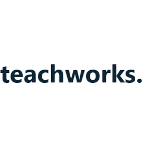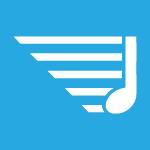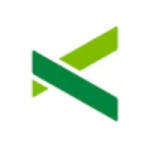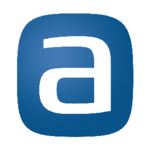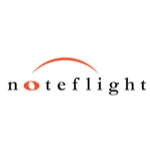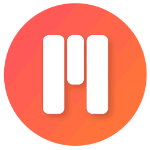List of Best Music School Software
Showing 10 of 17 productsTeachWorks is a new software designed specifically for educational institutions. This innovative tool streamlines administrative tasks, simplifies scheduling, and enhances communication between teachers, students, and parents. With TeachWorks, educat...Read TeachWorks Reviews
Jackrabbit Music is a music studio management solution designed to simplify and streamline your daily operations. From class scheduling and attendance tracking to invoicing and online registration, our powerful software handles it all with ease. Say...Read Jackrabbit Music Reviews
My Music Staff is a solution for music teachers looking to simplify their administrative tasks and focus on what they do best teaching music. This user-friendly software streamlines scheduling, billing, and communication, making it easier than ever f...Read My Music Staff Reviews
Omnify is a software designed to streamline and simplify your business operations. With its user-friendly interface features, Omnify helps you save time, increase efficiency, and grow your business. From scheduling appointments to managing payments,...Read Omnify Reviews
Pike13 is a all-in-one solution for managing your fitness business. With its user-friendly interface and powerful features, Pike13 streamlines your day-to-day operations, from scheduling and billing to client management and reporting. Say goodbye to...Read Pike13 Reviews
WellnessLiving is a software that is changing the game for businesses in the health and wellness industry. With its user-friendly interface features, its making managing and growing your business easier than ever before. Say goodbye to complicated sy...Read WellnessLiving Reviews
ASIMUT is a solution for managing and organizing all aspects of your institutions events and resources. With user-friendly features and customizable options, ASIMUT streamlines the planning process and enhances communication within the organization...Read ASIMUT Reviews
Noteflight the innovative music composition platform that empowers musicians of all levels to write, edit, and share their musical creations. With its user-friendly interface and robust features, Noteflight makes music composition accessible and coll...Read Noteflight Reviews
La Touche Musicale is an innovative music software that revolutionizes the way you create and experience music. With its user-friendly interface and seamless integration of technology and art, La Touche Musicale brings music to life like never before...Read La Touche Musicale Reviews
Introducing, opus1.io is a software that simplifies complex project management tasks. With opus1.io, teams can collaborate seamlessly, increase productivity and achieve project goals efficiently. Say goodbye to traditional methods and embrace a new w...Read opus1.io Reviews
- What Is Music School Software?
- Top Reasons Why Businesses Need Music School Software?
- What Are the Top Key Features of Music School Software?
- What Are the Top Benefits of Music School Software?
- What Are the Steps to Choose the Right Music School Software?
- What Are the Types of Music School Software for Different Industries?
- What Are the Technology Trends for Best Music School Software?
- What Are the Deployment Options for Music School Software?
What Is Music School Software?
Music school software refers to a category of computer applications designed to facilitate the practice and learning of music by pupils. This platform offers a range of practice tools and feedback mechanisms that facilitate the development of musical abilities.
The program commonly oversees the practice and advancement of students by means of drills that present challenges aimed at enhancing their musical comprehension and performance abilities. The majority of music school software offers instructional materials that guide students in various subjects such as scales, sight-reading, and music theory.
The software possesses the capability to facilitate the instruction of diverse musical instruments, encompassing those typically found in an orchestral setting as well as those utilized in rock or electronic bands.
The software facilitates a simulated classroom environment, wherein virtual instructors are capable of showcasing instructional strategies and providing responses to inquiries.
Additionally, the software possesses a comprehensive collection of musical compositions accompanied by detailed audio recordings with the purpose of aiding students in comprehending the musical style, structure, and intricacies of each work.
Additionally, the software has several tools that facilitate the analysis of music, including features such as notation, spectrographs, and audio comparisons. These tools can be utilized to discern anatomical features and musical composition, so aiding in the interpretation of the lyrical content of a song.
The inclusion of these various elements renders music lesson software an indispensable component of the educational journey for every music student.
Top Reasons Why Businesses Need Music School Software?
1. Efficiently oversee student data, encompassing contact details, financial transactions, lesson records, and attendance records.
2. One potential solution to streamline administrative processes is the automation of essential operations, including but not limited to class scheduling, invoice generation, and the dissemination of email and SMS notifications.
3. Employ online student portals as a means to facilitate students' registration for classes, verification of schedules, and retrieval of educational materials.
4. The objective is to optimize the monitoring of student advancement, attendance, and financial transactions across a range of new media and recording session courses.
5. The system enables the inclusion and monitoring of student target objectives and accomplishments in both individual and group instructional settings.
6. One recommendation is to offer students the opportunity to utilize self-assessment tools in order to document and evaluate their own academic progress.
7. Facilitate the continuous evaluation and review of student progress by instructors through the utilization of assessments and reports.
8. One potential strategy to enhance the educational experience is to provide students with the opportunity to schedule lessons online, either for virtual or in-person instruction.
Additionally, it would be beneficial to develop personalized practice and rehearsal programs that cater to the unique needs and abilities of each individual student.
9. The system is capable of producing a variety of statistics and analytics, encompassing staff engagement, student engagement, and financial reporting.
10. The objective of this study is to conduct an analysis and comparison of instructor and student performance using a range of measures.
11. Implementing an automated system for lesson payments to ensure punctual remittances and facilitate the provision of discounts to students.
12. Establish seamless integration with widely used software tools to facilitate a smooth and effortless experience for both faculty and students.
13. One potential strategy is to provide students with a range of resources, including audio recordings, song lyrics, chord charts, films, and other relevant materials.
14. The utilization of measurement techniques is vital in evaluating and enhancing students' proficiency across many musical genres.
15. Implement the functionality to monitor and evaluate the performance of after-school and off-site programs that are centered around performance-based activities.
What Are the Top Key Features of Music School Software?
The top key features of music school software include:
1. Customizable Curriculum: This functionality enables educational administrators to conveniently generate and incorporate courses, classes, and additional educational materials to cater to the requirements of their students.
2. Student Management: This functionality facilitates the monitoring of individual students' development, so providing guardians and teachers with an enhanced comprehension of their academic success.
3. Scheduling: The inclusion of automatic scheduling features in top music school software is essential for optimizing the registration process and ensuring efficient management of classes and lessons.
4. Payment Processing: The integration of a payment processing system within music lesson software is essential for the efficient and secure handling of tuition fees and other financial transactions.
5. Communication: The inclusion of efficient communication capabilities inside music school software is vital in order to establish and maintain connectivity between teachers, parents, and students.
6. Grade Book: This functionality facilitates the monitoring and modification of student grades by teachers, while simultaneously offering parents a comprehensive overview of their child's academic advancement.
7. Reporting: The inclusion of comprehensive reporting capabilities offers administrators and educators valuable insights into various aspects of student performance, enrollment statistics, attendance records, and additional relevant information.
8. Multimedia Integration: The inclusion of audio, video, and other multimedia materials inside best music school software is vital to facilitate comprehensive courses and provide students with a well-rounded educational experience.
What Are the Top Benefits of Music School Software?
1. Streamlined Organization: The utilization of the best music school software can effectively optimize the management and organization of administrative and scheduling responsibilities encountered by music schools and instructors.
This technology facilitates the efficient and accurate monitoring of student development by teachers, as well as the sharing of music syllabi and the management of scores and attendance.
2. Remote Learning: Music lesson software also enables remote learning, offering students the essential tools and capacities to engage in practice and learning activities from the comfort of their own homes.
3. Enhanced Productivity: Music school software facilitates the efficient allocation of music pieces to students and enables instructors to assess their progress, so promoting organization and productivity.
4. Communication Tools: Music lesson software also offers robust communication features, like instant messaging, video conferencing, and digital whiteboards, to facilitate effective collaboration between teachers and students.
5. Improved Classroom Management: The utilization of top music school software facilitates the cultivation of enhanced classroom interactions between educators and learners while streamlining the processes of monitoring, grading, and evaluating student advancement.
6. Reporting and Analytics: Music school software also offers extensive reporting and data tracking capabilities, enabling educators to conveniently assess student performance and identify potential areas for enhancement.
What Are the Steps to Choose the Right Music School Software?
1. Consider your goals for using the software: Please delineate your preferences and requirements for the type of software that is essential for your needs.
Are you in need of a comprehensive platform for managing a music school, or are you seeking a more basic scheduling tool? Are you in need of a robust reporting functionality to monitor and assess student attendance and academic advancement?
2. Research the available options: After establishing your objectives, it is advisable to explore the features and capabilities of several software programs. Consulting evaluations written by other users can assist individuals in making well-informed decisions.
3. Determine your budget: Determine the financial resources available for investment in top music school software. This process will assist in the reduction of available options and facilitate the selection of a package that aligns with one's financial constraints.
4. Consider extra features: Certain software programs provide additional functionalities, such as complimentary online instructional resources or the availability of a music repository. These tools possess significant value for both students and instructors.
5. Test it out: It is recommended to experiment with the trial versions of various software packages in order to determine the most suitable option for your needs. Ensuring the compatibility of software with one's requirements is of paramount importance.
Therefore, it is advisable to allocate sufficient time to familiarize oneself with the software's functionalities prior to making a purchase decision.
What Are the Types of Music School Software for Different Industries?
1. Music Education and Practice Software: The software solutions offered cater to educators and learners across various academic levels, equipping them with a range of tools to facilitate the instruction and practice of music composition, theory, and performance.
2. Music Theory Software: The top music school software offers users a comprehensive exploration of music theory, enabling musicians to efficiently enhance their abilities in composition, harmony, rhythm, and improvisation.
3. Music Production and Performance Software: This software integrates a user-friendly interface with advanced production functionalities, enabling producers and performers to efficiently generate recordings and live audio performances of high professional quality.
4. Music Notation Software: The software offers users a comprehensive platform for the creation and modification of musical scores, encompassing tasks such as composing sheet music and orchestrating intricate compositions.
5. Music Streaming Software: This software facilitates the seamless online streaming of users' musical compositions, enabling them to engage in activities such as sales, licensing, and the enhancement of their musical portfolio.
What Are the Technology Trends for Best Music School Software?
The technology trends for best music school software include:
1. Online Learning Platforms: Online learning technologies, including virtual classrooms, webinars, and live streaming, serve as valuable tools for music schools to expand the reach of their courses to a broader demographic.
In addition to their primary functions, these platforms offer supplementary capabilities such student evaluation, course personalization, and immediate feedback.
2. Artificial Intelligence and Machine Learning: Artificial intelligence (AI) and machine learning (ML) have the potential to be utilized in the development of top music school software, enabling the provision of tailored and individualized learning experiences.
Artificial intelligence (AI) and machine learning (ML) have the potential to be utilized in the development of interactive educational materials, such as lessons and activities, which aim to enhance students' comprehension of concepts and musical approaches.
3. Automation: The implementation of automation technology has the potential to optimize and enhance the administrative procedures of music schools. Automation solutions have the capability to provide students with timely reminders regarding forthcoming classes, provide comprehensive data on student progress, and effectively monitor payment transactions.
4. Content Management Systems: WordPress, among other content management systems, offers a highly effective platform for the development of websites catering to music schools.
Administrators are able to utilize these technologies to facilitate the creation and administration of material, facilitate online classes and courses, as well as generate personalized forms for student registration.
5. Digital Distribution Platforms: Digital distribution platforms play a vital role in facilitating the dissemination of content from the music school over the Internet, thereby enabling the institution to extend its reach to a broader demographic.
In addition, these digital distribution systems have the capability to incorporate analytics tools for the purpose of quantifying and assessing audience participation.
What Are the Deployment Options for Music School Software?
Deploying the best music school software can be done in a variety of ways. The most common options include:
1. On-premise Software: The process entails the physical deployment of the program onto physical servers, which are supplied by the music school. This alternative offers the educational institution enhanced software management capabilities, alongside enhanced performance and security measures.
2. Cloud-Based Software: This involves the acquisition of software from a cloud service provider using online means, either through rental or purchase.
Cloud-based solutions are typically characterized by their superior scalability and cost-effectiveness in comparison to on-premise software. Certain cloud-based alternatives also provide the benefit of enhanced accessibility across various devices that are connected to the internet.
3. Hybrid Deployments: Hybrid installations amalgamate the optimal features of both on-premise and cloud-based systems. This alternative can prove advantageous for educational institutions seeking greater administrative authority compared to a cloud-based solution, while simultaneously benefiting from the scalability inherent in cloud-based systems.
